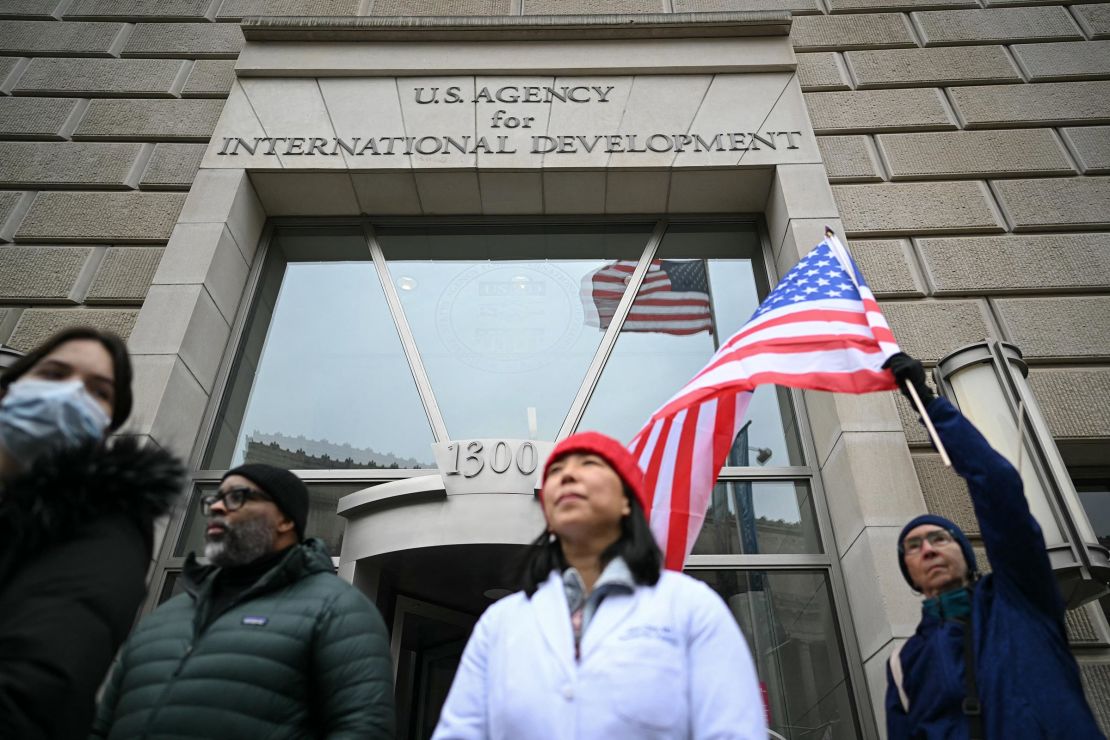A version of this story will appear in CNN’s What Matters newsletter. To get it in your inbox, sign up for free here.
CNN
—
Donald Trump ran his presidential campaign promising to abolish entire federal agencies and departments, but it’s not quite so easy for a president to simply end an organization that was created and funded each year by Congress, which is supposed to be the president’s equal.
So the president and his allies, led by Elon Musk, have found a different way to achieve many of the same goals: Put agencies long targeted by Republicans into a coma by sidelining their workforce, halting their operations and launching a review of their activity. Then, maybe, ask Congress to kill them outright.
The list of government agencies on life support or targeted for direct attack after two weeks of Trump 2.0 looks something like this:
► The Consumer Financial Protection Bureau
CFPB was set up by Congress after the Great Recession to protect consumers from financial abuses, and the agency has long drawn the ire of Republicans. All of its work has been halted and the director, Rohit Chopra, was fired this past weekend, before the end of his five-year term.
The acting head of the agency, Treasury Secretary Scott Bessent, ordered a review of agency policy to guarantee “consistency” with the new administration.
► US Agency for International Development
Set up by John F. Kennedy and Congress to help the developing world and defend US interests in 1961, USAID employees in 2025 have been locked out of headquarters and the website has been shut down. Agency staff around the world will be placed on administrative leave Friday and ordered to return to the US, according to a directive issued Tuesday night.
A freeze on most foreign aid while Trump’s administration reviews the agency has caused a worldwide ripple effect among non-profits and aid organizations and sparked fear the US is completely retreating from its leadership position in international development. Musk called the agency “evil” and Trump said it’s run by the “radical left.”

The acting head of USAID, Secretary of State Marco Rubio, told lawmakers in a letter that he would “begin the process of engaging in a review and potential reorganization of USAID’s activities to maximize efficiency and align operations with the national interest.”
Musk used more colorful language in a post on social media that he spent the weekend “feeding USAID into the woodchipper,” an apparent reference to the freezing of foreign aid.
► The Department of Education
In existence since the 1800s, but elevated by Congress as its own agency in 1979, the Department of Education is Trump’s next target. CNN reported that an executive order is being drafted ordering the incoming secretary, Linda McMahon, who has yet to get a Senate confirmation vote, to begin to “diminish” the department through executive action.
“I told Linda, ‘Linda, I hope you do a great job in putting yourself out of a job.’ I want her to put herself out of a job – Education Department,” Trump told reporters on Tuesday.
A narrowly divided Congress likely won’t consent to abolishing the department. But McMahon, who led the Small Business Administration during Trump’s first term and made her wealth as founder of WWE, may well succeed in severely “diminishing” its functions — and her own job.
Larger layoffs coming?
CNN reported Tuesday that Trump’s administration could be planning to lay off a large number of federal workers from across the federal government who don’t take a legally dubious buyout offer by Thursday, part of a potential coming “Reduction in Force.” Fears of those potential firings, along with the threat of moving agencies to different locations and a requirement to work in the office five days per week, regardless of collective bargaining agreements, are also being used by the administration to pressure federal workers to take the buyout offer.
Meantime, workers in certain roles, particularly focused on diversity initiatives, have been placed on administrative leave or sidelined.
These larger layoffs would not necessarily be a precursor to end an agency’s work. There will still be a need for a Patent and Trademark Office, a Department of Transportation and a Department of Homeland Security, among many others. Firings and reassignments seem likely to transform the Department of Justice and the FBI, but those agencies will continue to exist.
A more existential battle over foreign aid, consumer protection and education
Workers at USAID who tried to block Musk’s access to a payment system were placed on administrative leave and others have resigned. Musk has complained in particular about USAID funding diversity initiatives abroad.
But after an outcry from the international development community, the freeze on foreign funds was amended to allow for waivers for money that helps save lives, such as for the wildly successful AIDS program that distributes medication in Africa. But benefactors of the aid have reported trouble getting the waivers.
Rubio, appearing before reporters in Costa Rica, said if an agency cannot figure out the waivers, he questions their competence and wonders if they’re “sabotaging it for purposes of making a political point.”
What Trump can’t do is just end these agencies
There seems to be an acknowledgment that Trump cannot, with the swipe of his Sharpie, simply end a government agency.
But that doesn’t mean it can’t be twisted and reorganized into a shadow of its former self. Elements of USAID’s mission could be swallowed up by his State Department even though the agency was specifically created to be separate from the American diplomatic mission.
“USAID may move, reorganize, and integrate certain missions, bureaus, and offices into the Department of State, and the remainder of the Agency may be abolished consistent with applicable law,” Rubio wrote in his letter to lawmakers.
The executive order being drafted to diminish the Department of Education would also push for Congress to pass legislation ending the department, which mainly distributes federal funds to states.
Trump told reporters Tuesday he wants states to have more power over their education systems because, in his view, US schools are failing.
“We spend more per pupil than any other country in the world, and we’re ranked at the bottom of the list,” Trump said, adding that he wants to “let the states run schools.”
Ironically, Trump signed an executive order in January that would take some power over education away from states and exert more control over what schools teach, threatening federal funds for schools that teach what he views as “critical race theory” or other race or sexuality-based topics.
CFPB has been fighting for its life for most of its existence
In May, the Supreme Court ruled that CFPB could continue to exist, endorsing a unique funding structure that finances the organization through earnings of the Federal Reserve system, and allowing years of rules meant to protect consumers. CNN’s report notes CFPB was funded through the Federal Reserve “to safeguard the bureau’s independence from the whims of whatever party controls Congress.”
But Trump’s move to completely halt enforcement of CFPB rules throws into jeopardy its efforts to cap overdraft fees and credit card late fees, remove medical debt from credit reports, and more.

The conservative Supreme Court Justice Samuel Alito disagreed with the court’s decision on CFPB’s funding mechanism, arguing the appropriations clause of the Constitution should require Congress to fund agencies.
Alito’s view will now be tested when court cases expected to challenge Trump’s moves make their way through the legal system. Numerous lawsuits have been filed already opposing Trump’s early moves and more will follow regarding these efforts to diminish agencies.


